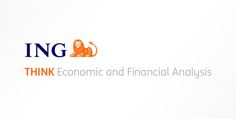Trump administration authorizes CIA for covert action in Venezuela - Bloomberg
Chair Powell does not have to pretend to maintain a degree of hawkishness as the recent data in fact supports such a stance. The next FOMC is still a month away; plenty of time to pivot. Good eurozone PMIs support the idea of a cyclical upswing, which would put more upward pressure on the belly of the curve as it raises the probability of an ECB hike in 2026
A Run of US Data That Sets Up Chair Powell to Be More Hawkish Than Many Expect
Thursday saw US jobless claims come in up 235k, continuing claims at 1.97m and the Philly Fed down to -0.3. All weaker than expected. But don’t get too carried away on this. Claims are still tolerably low. As are continuing claims. It’s more the direction of travel in issue. On these data alone, there is no gun to the Fed’s head to cut rates. It’s more a case of they could cut if the other stars align, and the issue here remains ’inflation’.
Wednesday also saw August PMI’s come in in the low to mid 50’s for August. These do not point to a recessionary tendency, rather they point to moderate growth. These data muddy the waters for the rate-cut optimists. Chair Powell on Thursday has even more reason to avoid caving to the rate-cut crew, led by cheerleader in chief Donald J Trump. Yields backing up again, which has been a general theme in the past week or so. Flattening from the front end overall, as the September rate cut gets questioned.
July existing home sales also came in stronger than expected at 4.01m, up 2% for July. Great! But these are still down in the dumps. These were the types of volumes seen as a consequence of the Great Financial Crisis (2008/10). Nothing to get excited about here from the housing market perspective, although it does round off a run of firmer data than expected. Mostly second tier, but singing from the same hymn sheet is seems.
Yields were up Thursday on aggregate, and the curve flatter from the front end, which looks about the right reaction overall as we face into Chair Powell on Friday. We expect him to be neutral-to-hawkish, which given the above should not be a huge surprise.
A Cyclical Upswing in Eurozone Growth Puts Upward Pressure on the Belly of the Curve
Markets deem a rate cut by the European Central Bank as less and less likely and the belly of the curve may be next to recalibrate higher. Another good series of eurozone PMIs suggests that the eurozone economy can maintain growth in an environment of a 2% policy rate and quantitative tightening in the background, and that while we have plenty of geopolitical tensions weighing on sentiment. Even though we think another ECB cut is possible, we also feel that markets should start considering a rate hike later in 2026 and early 2027.
If the narrative of a cyclical upswing in the eurozone gets more traction, we would see more upward pressure on 5Y swap rates. Even though we have a tilt towards disinflation in the near term, the fiscal impulse coming in 2026 should start adding to price pressures again, especially given that labour markets are still tight. As a result, we expect to see markets pricing in the possibility again of 2.25% as the long run policy rate anchor.
Friday’s Main Events and Market View
The main event of the day is Fed Chair Powell’s key note at the Jackson Hole Symposium where he is anticipated to give his view on inflation, the state of the jobs market and what his thoughts for the September meeting are as the market is seeing a cut already as the base case. US data will only be secondary to the policy commentary with new home sales and building permits on the publication slate.
EUR markets will look to the release of the ECB’s negotiated wages data for the second quarter for affirmation of cooling inflation trends.
Disclaimer: This publication has been prepared by ING solely for information purposes irrespective of a particular user’s means, financial situation or investment objectives. The information does not constitute investment recommendation, and nor is it investment, legal or tax advice or an offer or solicitation to purchase or sell any financial instrument. Read more
